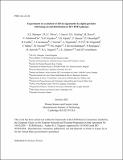| dc.contributor.author | Sharapov, S.E. | en_US |
| dc.contributor.author | Oliver, H.J.C. | en_US |
| dc.contributor.author | Garcia, J. | en_US |
| dc.contributor.author | Keeling, D.L. | en_US |
| dc.contributor.author | Dreval, M. | en_US |
| dc.contributor.author | Goloborod'ko, V. | en_US |
| dc.contributor.author | Kazakov, Ye. O. | en_US |
| dc.contributor.author | Kiptily, V.G. | en_US |
| dc.contributor.author | Stancar, Z. | en_US |
| dc.contributor.author | Bonofiglo, P.J. | en_US |
| dc.contributor.author | Coelho, R. | en_US |
| dc.contributor.author | Craciunescu, T. | en_US |
| dc.contributor.author | Ferreira, J. | en_US |
| dc.contributor.author | Figueiredo, A. | en_US |
| dc.contributor.author | Fil, N. | en_US |
| dc.contributor.author | Fitzgerald, M. | en_US |
| dc.contributor.author | Nabais, F. | en_US |
| dc.contributor.author | Nocente, M. | en_US |
| dc.contributor.author | Puglia, P.G. | en_US |
| dc.contributor.author | Rivero-Rodriguez, J. | en_US |
| dc.contributor.author | Rodrigues, P. | en_US |
| dc.contributor.author | Salewski, M. | en_US |
| dc.contributor.author | Tinguely, R. Alex | en_US |
| dc.contributor.author | Zakharov, L.E. | en_US |
| dc.contributor.author | JET contributors | en_US |
| dc.date.accessioned | 2025-03-21T20:13:48Z | |
| dc.date.available | 2025-03-21T20:13:48Z | |
| dc.date.issued | 2023-10 | |
| dc.identifier | 23ja030 | |
| dc.identifier.uri | https://hdl.handle.net/1721.1/158598 | |
| dc.description | Submitted for publication in Nuclear Fusion | |
| dc.description.abstract | Dedicated experiments were performed in JET DTE2 plasmas for obtaining an α-particle bump-on-tail (BOT) distribution aiming at exciting Alfvén Eigenmodes (AEs). NBI-only heating with modulated power was used so that fusion-born α-particles were the only ions present in the MeV energy range in these DT plasmas. The beam power modulation on a time scale shorter than the α-particle slowing down time was chosen for modulating the α-particle source and thus sustaining a BOT in the α-particle distribution. High-frequency modes in the TAE frequency range and multiple short-lived modes in a wider frequency range have been detected in these DT discharges with interferometry, soft X-ray cameras, and reflectometry. The modes observed were localised close to the magnetic axis, and were not seen in the Mirnov coils. Analysis with the TRANSP and Fokker-Planck FIDIT codes confirms that α-particle distributions with bump-on-tail in energy were achieved during some time intervals in these discharges though no clear correlation was found between the times of the high-frequency mode excitation and the BOT time intervals. The combined MHD and kinetic modelling studies show that the high-frequency mode in the TAE frequency range is best fitted with a TAE of toroidal mode number n= 9. This mode is driven mostly by the on-axis beam ions while the smaller drive due to the pressure gradient of α-particles allows overcoming the marginal stability and exciting the mode [H.J.C. Oliver et al. Toroidal Alfvén eigenmodes observed in low power JET deuterium-tritium plasmas, to be submitted to Nuclear Fusion (2023)]. The observed multiple short-lived modes in a wider frequency range are identified as the on-axis kinetic Alfvén eigenmodes predicted in [M.N. Rosenbluth, P.H. Rutherford, Phys. Rev. Lett. 34 (1975) 1428]. | |
| dc.publisher | IOP | en_US |
| dc.relation.isversionof | doi.org/10.1088/1741-4326/acee10 | |
| dc.source | Plasma Science and Fusion Center | en_US |
| dc.title | Experiments on excitation of Alfvén eigenmodes by alpha-particles with bump-on-tail distribution in JET DTE2 plasmas | en_US |
| dc.type | Article | en_US |
| dc.contributor.department | Massachusetts Institute of Technology. Plasma Science and Fusion Center | |
| dc.relation.journal | Nuclear Fusion | |
